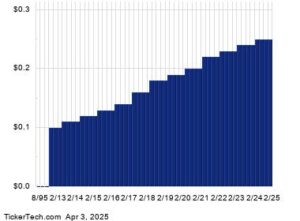Khaled Naja, CEO of Core Group Partners.
For over two decades, I have been at the center of some of the world’s largest infrastructure projects. I have seen airports modernize, mega-terminals rise and entire transportation ecosystems evolve. But despite the billions poured into these projects, the infrastructure industry is still being constructed, and in many ways, it’s still operating like it’s 1999.
While finance, healthcare and even agriculture have embraced digital transformation, infrastructure remains one of the least digitized industries. We collect mountains of data, but we let it go to waste. We build massive projects, but we struggle to control costs. We set ambitious timelines, but a high number of major construction projects still run late.
Some sectors of infrastructure have made strides in digitization—such as building information modeling (BIM) adoption and data-driven scheduling—but the broader industry remains largely analog, struggling to scale digital solutions effectively. I believe that if the industry doesn’t change how it works, it will not just fall behind but ultimately fail. And failure isn’t an option when the stakes are this high.
Challenges Facing The Infrastructure Industry
The numbers speak for themselves. A 2022 McKinsey analysis found that “cost overruns, on average, ran at least 79% relative to initial budget estimates, while delays averaged out to 52% compared against initial time frames.” FMI found that 95.5% of all data captured in construction goes unused. What’s more, 90% of that data is unstructured, meaning organizations can’t analyze it efficiently.
Wherever you look, the industry has been and still is hemorrhaging billions due to inefficiencies—not because we lack the technology, but because we fail to adopt it at scale. I’ve observed that despite massive data collection, many capital programs lack a centralized data and digital control tower that allows for real-time insights. Data often remains siloed across contractors, project owners and funding agencies, preventing the industry from leveraging predictive analytics at scale.
Yet the problem cannot be laid solely at the feet of infrastructure leaders resisting change. There are several additional factors that slow digital transformation:
• Risk Aversion: Digital transformation introduces unknowns, and no executive wants to be responsible for a failed multi-billion-dollar project experiment.
• Integration Complexity: Construction projects involve multiple stakeholders (government, contractors, lenders, insurers, operators, etc.), making new technology adoption difficult.
• CapEx Vs. OpEx Trade-Offs: Many digital investments do not provide immediate ROI, making them a tough sell to financial stakeholders.
Many leaders aren’t rejecting digital transformation—they are struggling to justify ROI and manage integration risks. I believe the key to unlocking this potential is to align digital investments with clear, measurable project benefits. This requires understanding what tools are available and how they can assist your company in achieving its transformation goals.
Three Technologies Redefining How Infrastructure Is Built And Operated
• AI-Driven Construction
AI technology is transforming project management into a predictive science, improving cost control and schedule optimization. By analyzing historical project data and running millions of schedule simulations, AI tools can forecast risks, identify inefficiencies and propose adjustments in real time. When implemented effectively, AI-driven planning can help capital program executives make data-backed decisions that minimize overruns and optimize resource allocation before issues escalate.
• Digital Twins
A digital twin is a real-time virtual replica of a physical asset. These tools can enable predictive maintenance, reduced downtime and optimized performance. By integrating IoT sensors, AI and real-time data, companies can shift infrastructure management from reactive to proactive, preventing failures before they happen. For capital program executives, digital twins can also provide improved ability to test operational decisions in a risk-free environment before applying them in the real world.
• Blockchain Contracts
While still in early adoption, blockchain-based smart contracts could revolutionize risk management, payment processing and dispute resolution in infrastructure projects. By automating contract execution and securely storing project data, blockchain can be used to reduce disputes, prevent fraud and accelerate payment timelines. For capital project leaders, blockchain can provide a secure, tamper-proof system that helps ensure greater accountability, contract efficiency and risk mitigation.
A Roadmap For Adoption
If you’re ready to take the next step in achieving digital transformation, here are three steps I have found to be effective for starting out:
1. Identify high-impact use cases. I recommend starting with AI-driven scheduling, digital twins for asset tracking or predictive maintenance.
2. Redesign key processes. Digital transformation isn’t just about choosing the right technology; it requires redesigning and removing redundancies in your processes, changing the way your people work and then using technology to accelerate the change.
3. Run low-risk rapid pilots. Test solutions on controlled projects before scaling across entire programs.
Much like prefabrication and modular construction before it, digital transformation’s time has come. For decades, we have relied on traditional processes, analog reporting and outdated tools. But the world around us has changed, and now we must change, too. AI-driven project management, digital twins and blockchain are no longer abstract ideas—they are proven tools that can deliver cost savings, efficiency gains and risk reduction.
I believe that those who embrace digital transformation and available technologies will be the ones to build the next generation of infrastructure. This is our moment to reset, lead and redefine the industry.
Forbes Business Council is the foremost growth and networking organization for business owners and leaders. Do I qualify?
Read the full article here











